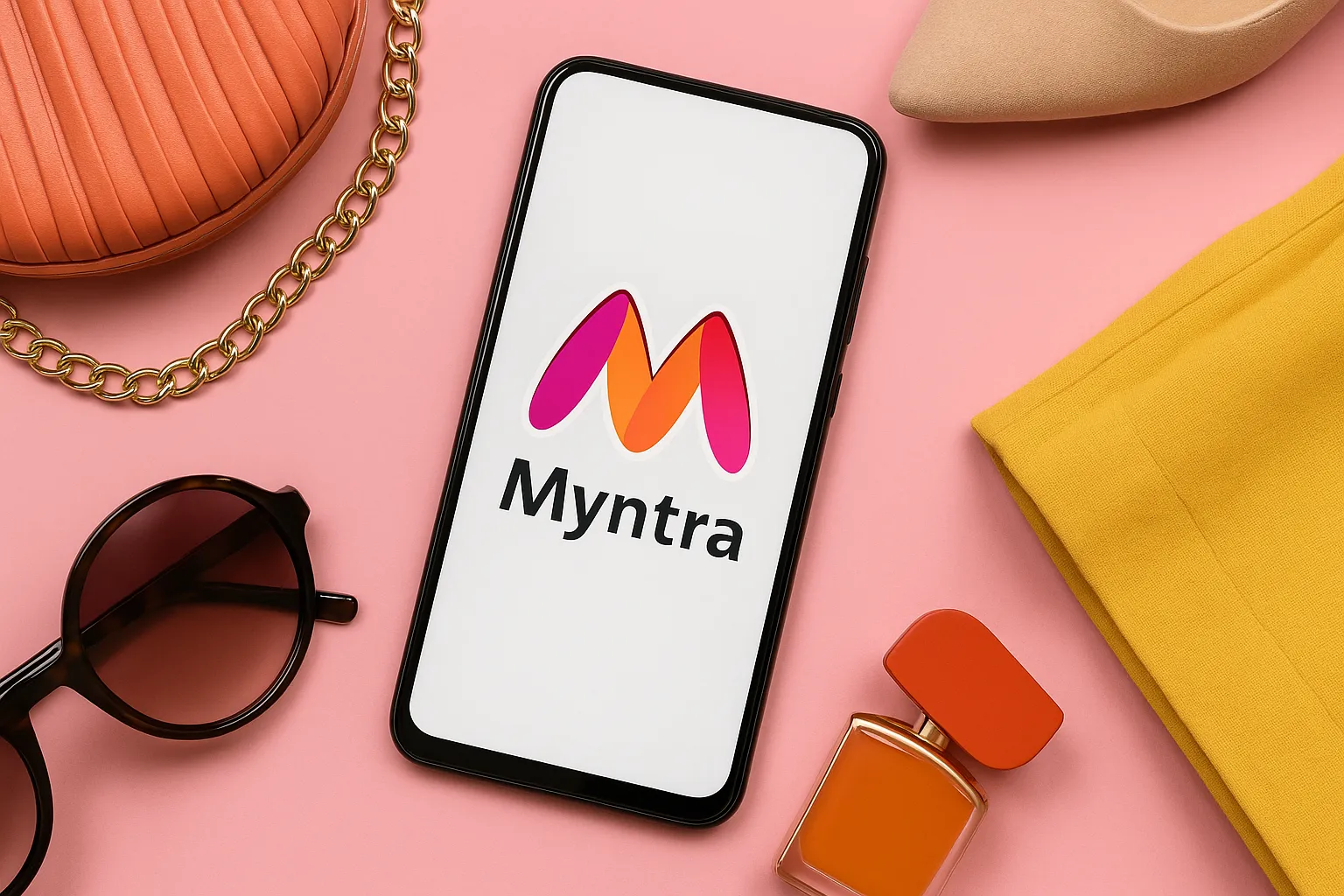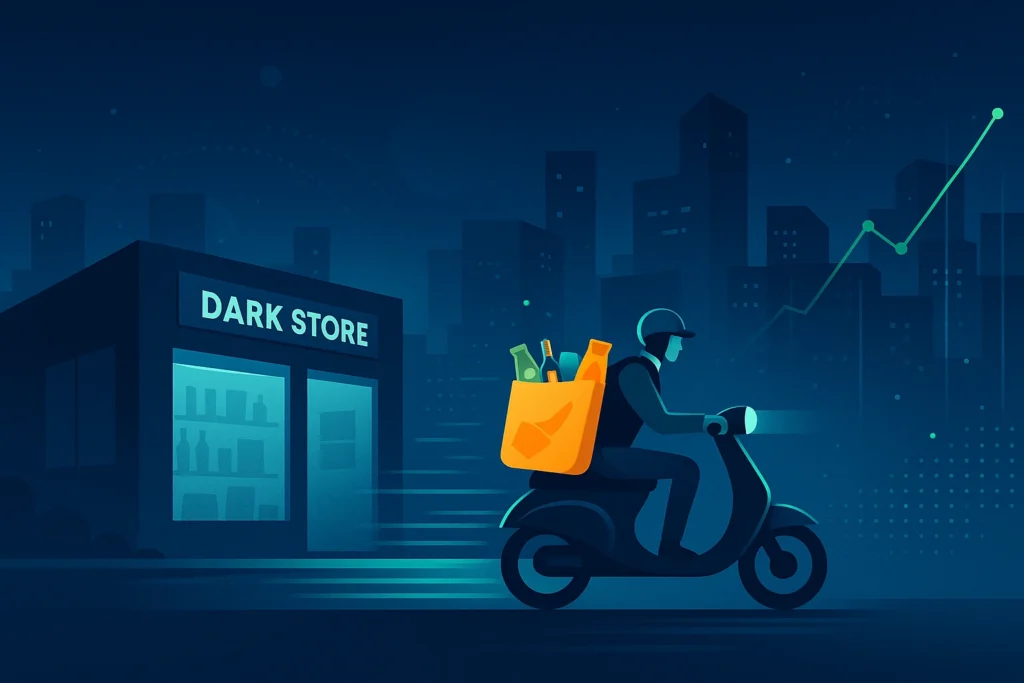Myntra has become a household name in India’s booming e-commerce scene, especially when it comes to fashion and lifestyle. Launched in 2007, Myntra has evolved from a personalization platform to the country’s leading online fashion destination. With millions of active users, a rich catalog of brands, and innovative marketing campaigns, Business Model of Myntra is a masterclass in blending technology, logistics, and customer experience.
For any founder exploring how to build a scalable online marketplace, Myntra’s strategy offers plenty of lessons. Its approach to monetization, customer engagement, and brand partnerships has set new standards in the Indian fashion industry. In this guide, we’ll unpack exactly how Myntra operates, generates revenue, and continues to innovate year after year.
What is Myntra & How It Works
Myntra is India’s largest online fashion and lifestyle marketplace. It solves a simple but massive problem: making branded apparel and lifestyle products accessible to customers across India, all through a single digital platform.
Here’s a closer look at how Myntra operates:
The Problem It Solves
- Before Myntra, shopping for branded clothes meant visiting crowded malls or depending on local stores with limited selection.
- Myntra aggregates thousands of brands and styles in one app, offering convenience, variety, and competitive pricing.
How the Platform Works
- Marketplace Model: Myntra connects sellers (brands, retailers) with buyers through its app and website.
- Curation: Products are organized by category, brand, style, and price, with recommendation engines to personalize listings.
- Logistics: Myntra manages warehousing, last-mile delivery, and reverse logistics to ensure fast, reliable service.
- Payments: Customers can pay via multiple methods—COD, credit cards, UPI, and wallets.
- Returns: Easy returns and exchanges build trust and improve repeat purchases.
Who Uses Myntra?
- Style-conscious millennials and Gen Z shoppers
- Busy professionals who value convenience
- Tier-2 and Tier-3 city customers looking for branded apparel
- Brands wanting to expand their digital footprint
This operational model has allowed Myntra to scale rapidly while maintaining a strong focus on customer satisfaction.
Read More : What is Myntra App and How Does It Work?
Myntra targets fashion-focused online shoppers.
Myntra’s success is rooted in how precisely it understands and caters to its diverse customer base. Here’s a snapshot of the primary audience segments driving its growth:
Urban Millennials and Gen Z Shoppers
- Age group: 18–35 years
- Tech-savvy, fashion-conscious, and active on social media
- Regularly shop for the latest styles, seasonal collections, and exclusive drops
Working Professionals
- Busy individuals with disposable income
- Prefer online shopping over visiting stores
- Value convenience, fast delivery, and easy returns
Tier-2 and Tier-3 City Consumers
- Emerging customer base outside major metros
- Increasing internet penetration and smartphone adoption
- Aspire for branded products but lack local access
Value Seekers
- Customers who look for deals, discounts, and affordable branded products
- Actively browse sale events like End of Reason Sale (EORS)
Fashion Enthusiasts and Influencers
- Early adopters who shape buying trends
- Follow Myntra Studio for style inspiration and content
By targeting these segments with tailored campaigns, personalized recommendations, and competitive pricing, Myntra has built a loyal customer ecosystem.
Features that Support the Business Model
Myntra’s business model thrives on a powerful blend of technology, merchandising, and user engagement. Here are seven core features that directly contribute to revenue and customer loyalty:
1. Personalized Recommendations
- AI-driven suggestions based on browsing and purchase history
- Increases cross-selling and upselling opportunities
2. Myntra Studio
- In-app content hub with style tips, influencer videos, and brand stories
- Drives user engagement and inspires purchase decisions
3. Flash Sales & Big Events
- Flagship campaigns like End of Reason Sale (EORS) and Big Fashion Festival
- Create urgency, boost GMV (Gross Merchandise Value), and attract price-sensitive shoppers
4. Assured Quality and Easy Returns
- Verified sellers and strict quality checks
- Seamless returns process reduces purchase hesitation
5. Loyalty Programs (Myntra Insider)
- Rewards program offering early access, special discounts, and perks
- Encourages repeat purchases and customer stickiness
6. Mobile-First Shopping Experience
- Highly optimized app with smooth navigation and fast checkout
- Appeals to India’s mobile-first internet users
7. Brand Partnerships & Exclusive Collections
- Collaborations with top brands and private labels
- Drives differentiation and higher margins
Each of these features is carefully designed to support revenue growth while keeping customers engaged and satisfied.
Read More : Best Myntra Clone Scripts in 2025: Features & Pricing Compared
Revenue Streams of Myntra
Myntra generates revenue through a multi-layered approach combining marketplace commissions, exclusive partnerships, advertising, and value-added services. Below is a clear table summarizing each revenue stream and how it works:
| Revenue Stream | How It Works |
| Commission on Sales | Myntra charges sellers a commission (typically 15–25%) on every successful transaction made through its platform. |
| Private Labels | In-house brands like Roadster and HRX deliver higher profit margins by removing intermediaries. |
| Advertising & Promotions | Brands pay for sponsored placements, banner ads, and promotion slots within the app and website. |
| Logistics & Fulfillment Fees | Myntra charges sellers for warehousing, packaging, and last-mile delivery services. |
| Subscription Programs | Myntra Insider rewards program encourages loyalty, while premium services (like priority delivery) offer added revenue. |
| Event-Based Sales | Major campaigns (e.g., End of Reason Sale) drive massive volume, increasing commissions and clearing seasonal inventory profitably. |
Quick Overview of How Each Stream Works:
- Commission on Sales
- The primary income source; percentage varies by category and brand.
- The primary income source; percentage varies by category and brand.
- Private Labels
- Direct sourcing and branding deliver better margins.
- Direct sourcing and branding deliver better margins.
- Advertising & Promotions
- High-visibility placements are sold to brands eager to reach Myntra’s audience.
- High-visibility placements are sold to brands eager to reach Myntra’s audience.
- Logistics & Fulfillment
- Value-added services generate fees from sellers who prefer Myntra handling storage and delivery.
- Value-added services generate fees from sellers who prefer Myntra handling storage and delivery.
- Subscriptions & Loyalty
- Programs that deepen engagement and drive repeat business.
- Programs that deepen engagement and drive repeat business.
- Event-Based Sales
- Seasonal events that generate spikes in both traffic and revenue.
- Seasonal events that generate spikes in both traffic and revenue.
Read more : Revenue Model of Myntra: How India’s Fashion Leader Monetizes Style
Key Costs Structure of Running Myntra
Running a large-scale fashion marketplace like Myntra comes with significant operational costs. Here are the main expense categories that sustain and grow the business:
1. Warehousing and Logistics
- Leasing and managing fulfillment centers across the country
- Packaging, shipping, and reverse logistics (returns)
2. Payment Processing Fees
- Charges from payment gateways for handling transactions
- Cash-on-delivery operational costs
3. Marketing and Promotions
- Customer acquisition campaigns on digital and offline channels
- Discounts, cashback offers, and seasonal sale budgets
4. Technology and Platform Maintenance
- App development, hosting, and cybersecurity
- Continuous improvements to search, recommendation engines, and user experience
5. Employee Salaries and Operations
- Teams for category management, merchandising, customer service, and logistics
- Management overhead
6. Content Creation and Influencer Collaborations
- Producing high-quality photos, videos, and Myntra Studio content
- Fees for celebrity endorsements and influencers
7. Returns and Refunds
- Processing costs for returned orders
- Restocking and potential losses on damaged items
These costs are carefully balanced against revenue streams to ensure profitability and sustainable growth.
Latest Innovations and Strategic Updates
Myntra is constantly evolving to stay ahead in India’s competitive e-commerce market. Here are some of the most notable innovations and strategic updates shaping its business model in 2024–2025:
1. AI-Powered Personalization
- Myntra has enhanced its recommendation engine to serve hyper-personalized product feeds.
- Machine learning models analyze user behavior to improve conversion rates and basket size.
2. Live Commerce Integration
- The platform introduced Myntra Live shopping shows, where influencers host live streams to showcase collections.
- This drives impulse purchases and higher engagement among Gen Z.
3. Expansion of Private Labels
- Myntra is doubling down on its most profitable private brands like Roadster, HRX, and Anouk.
- Exclusive launches and premium collections help strengthen margins.
4. Improved Tier-2 and Tier-3 Logistics
- Faster deliveries and localized promotions target customers in smaller cities.
- This widens Myntra’s reach and customer base.
5. Loyalty Program Enhancements
- Myntra Insider has been revamped with more rewards tiers, early access to sales, and personalized deals.
- This boosts repeat purchase frequency.
6. Sustainability Initiatives
- New eco-friendly packaging and sustainable product lines cater to conscious consumers.
- Green initiatives also help differentiate Myntra’s brand positioning.
These updates make Myntra more resilient and adaptable in a fast-changing market—and provide inspiration for startups planning to build a similar marketplace.
Takeaways for Startup Founders
Building an online fashion marketplace like Myntra requires more than just listing products—it demands a well-orchestrated mix of technology, logistics, and customer experience. Here are some actionable insights for founders thinking about creating their own version:
1. Focus on Personalization
Customers expect relevant suggestions. Investing early in recommendation algorithms can boost conversions significantly.
2. Build a Strong Private Label Strategy
Private labels give you better control over margins and inventory. Start with a few categories, then scale as you understand demand.
3. Don’t Underestimate Logistics
Fast, reliable delivery and easy returns build trust and loyalty. Partner with capable logistics providers or develop your own network.
4. Plan Seasonal Campaigns Early
Events like Myntra’s End of Reason Sale create urgency and massive spikes in traffic. Use planned sales to clear inventory and acquire new users.
5. Loyalty Pays Off
Reward programs like Myntra Insider help retain customers. Consider tiered benefits and exclusive perks.
6. Content is Commerce
Features like live shopping, influencer collaborations, and editorial content drive engagement. Invest in storytelling and community-building. By studying Myntra’s approach, you’ll see that a robust business model balances multiple revenue streams with delightful user experience.
At Miracuves, we specialize in helping founders bring these kinds of marketplaces to life—ready-made, customizable, and fast to launch. Whether you’re targeting fashion, electronics, or groceries, we can build a solution inspired by Myntra’s proven model.
Read more : Reasons startup choose our myntra clone over custom development
Conclusion :
Myntra’s business model is a benchmark for anyone building an online fashion marketplace. From robust logistics to engaging content and smart monetization strategies, Myntra shows that success lies in a seamless blend of technology, customer experience, and revenue diversification.
If you’re planning to launch your own fashion app or multi-brand marketplace, working with an experienced partner can accelerate your journey. At Miracuves, we build ready-made, fully customizable marketplace solutions that save you time, money, and headaches.
Whether you want an Uber clone, a Netflix clone, or a powerful fashion marketplace like Myntra, our team is here to help you launch quickly and scale confidently.
Ready to build your own Myntra-style app?
Contact Miracuves today to start your project.
FAQs
How does Myntra make money if it offers so many discounts?
Myntra uses a combination of commissions on sales, advertising fees, and higher-margin private labels to balance the impact of discounts. Major sales events help drive massive order volumes, which in turn increase revenue and attract repeat customers.
What makes Myntra different from other e-commerce platforms?
Myntra focuses purely on fashion and lifestyle, offering curated premium brands, exclusive private labels, and engaging experiences like Live Commerce. This niche approach builds a loyal, style-focused audience.
How important is the Myntra Insider loyalty program?
Very important. Myntra Insider boosts repeat purchases through early sale access, special deals, and rewards—turning occasional buyers into loyal customers.
What role does technology play in Myntra’s success?
Technology powers Myntra’s personalization, real-time inventory, and smooth shopping experience. It’s the backbone that enables scale and customer satisfaction.
Can startups replicate Myntra’s model without huge investment?
Yes. With ready-made marketplace solutions like those from Miracuves, startups can launch quickly, reduce costs, and gradually scale features as they grow.
Related Articles :








